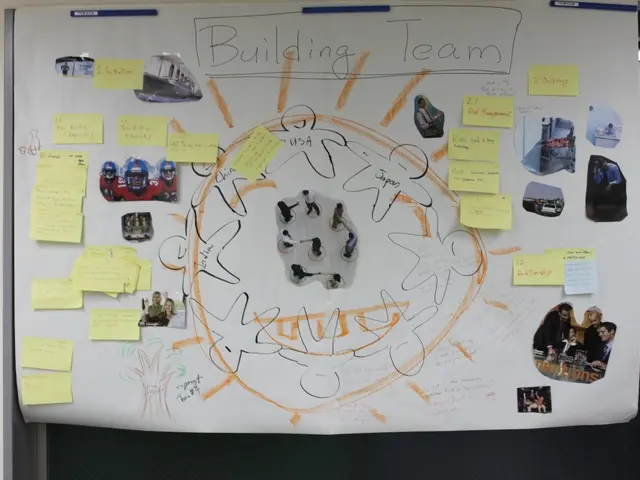Options for managing C3 glomerulopathy (C3G): examining therapeutic strategies
Take Control of C3 Glomerulopathy: From Old Treatments to New Horizons
Managing C3 glomerulopathy (C3G) is a crucial step in maintaining kidney health and controlling the overactive immune system associated with this rare condition. learn about the current treatments and the exciting new therapies on the horizon.
C3G by the NumbersC3G affects around 2-3 people out of every 1 million. This condition results in the accumulation of protein deposits in the kidney's filtering tissues, leading to impaired kidney function over time and potential kidney failure.
Combating C3G: The Now and BeyondAs there's no cure for C3G, treatments primarily focus on supporting healthy kidney function, suppressing the immune system, and targeting the proteins responsible for the disease activity.
Current Treatments
The immune system-suppressing medications commonly prescribed for C3G include angiotensin converting enzyme (ACE) inhibitors and angiotensin receptor blockers (ARBs), mycophenolate mofetil (MMF), and glucocorticoids. These medications help slow down kidney damage and prevent protein leakage.
Taming the Immune Response
KDIGO guidelines recommend immune-suppressing medications once declining kidney function persists for at least 6 months or if other indicators of C3G progression are present, such as increasing levels of protein in the urine.
Cutting-Edge Therapies
Researchers are working tirelessly to develop new treatments that directly target the complement system, where C3G originates. Several innovative treatments being tested in clinical trials include:
- Pegcetacoplan (Empaveli): A drug directly targeting C3, pegcetacoplan has received Priority Review by the FDA for treating C3G and related conditions.
- ARO-C3: This emerging treatment also targets C3, currently in clinical trials.
- KP104: A drug that targets both C3 and C5, aiming for more comprehensive complement system modulation.
Other Complement System Targets
- Danicopan: Targeting factor D, a component of the alternative pathway, inhibits C3 activation indirectly.
- Avacopan: Focused on C5a, a downstream product of C3 activation, this treatment will help reduce the impact of C3G on the kidneys.
- Narsoplimab: By inhibiting MASP-2, part of the lectin pathway, this treatment has an indirect effect on the complement system and potentially C3G.
The Road Ahead
The active research on new treatments for C3G is exciting, as it offers hope for those living with this condition. Stay informed and discuss treatment options with your healthcare provider to find the best approach for your unique situation.
- Despite the lack of a cure for C3 Glomerulopathy (C3G), managing the disease involves supporting healthy kidney function, immunosuppressive treatments, and targeting disease-causing proteins.
- In the treatment of C3G, immune-suppressing medications like angiotensin converting enzyme (ACE) inhibitors, angiotensin receptor blockers (ARBs), mycophenolate mofetil (MMF), and glucocorticoids are often prescribed to slow down kidney damage and prevent protein leakage.
- The Kidney Disease: Improving Global Outcomes (KDIGO) guidelines advise considering immune-suppressing medications when declining kidney function persists for at least 6 months or if other signs of C3G progression, such as increased urine protein levels, are present.
- To combat the underlying cause of C3G, researchers are diligently pursuing new therapies that directly target the complement system, where the disease originates.
- Pegcetacoplan (Empaveli), which specifically targets C3, has received Priority Review by the FDA for treating C3G and related conditions.
- ARO-C3, another treatment that targets C3, is currently undergoing clinical trials.
- KP104, a drug that targets both C3 and C5, is being developed to achieve more comprehensive modulation of the complement system.
- In addition to these C3-targeting treatments, other complement system targets include factor D, a component of the alternative pathway, and downstream products like C5a.
- Danicopan, by inhibiting factor D, indirectly inhibits C3 activation, while Avacopan is focused on C5a to minimize the impact of C3G on the kidneys.
- Narsoplimab, an emerging treatment, inhibits MASP-2, part of the lectin pathway, to affect the complement system and potentially C3G indirectly.
- These cutting-edge therapies being tested in clinical trials represent a significant stride in the ongoing fight against C3G.
- As advances in C3G treatments continue, it is essential to remain informed and discuss various treatment options with healthcare providers to tailor the best approach for individual circumstances.
- C3G, with its rare occurrence of 2-3 cases per million, can have a significant impact on kidney health and overall well-being, underscoring the importance of targeting this condition with science-backed therapies.
- The scientific community's focus on understanding and addressing C3G showcases the commitment to medical progress and the pursuit of happier, healthier lives through innovative treatments.
- Kidney health is not the only area being addressed by scientific advancements; breakthroughs are also being made in other chronic diseases, cancers, respiratory conditions, digestive health, eye health, hearing, and numerous other aspects of health and wellness.
- Fitness and exercise, a crucial component of overall health and wellness, can contribute to better cardiovascular health, helping mitigate the effects of Age-related decline.
- Skin care, with its potential for addressing skin conditions like psoriasis, plays a role in maintaining mental and men's health, demonstrating the interconnected nature of various health aspects.
- Therapies and treatments for autoimmune disorders, mental health issues, psoriasis, and more are being developed, exemplifying the holistic approach to health care and wellness.








